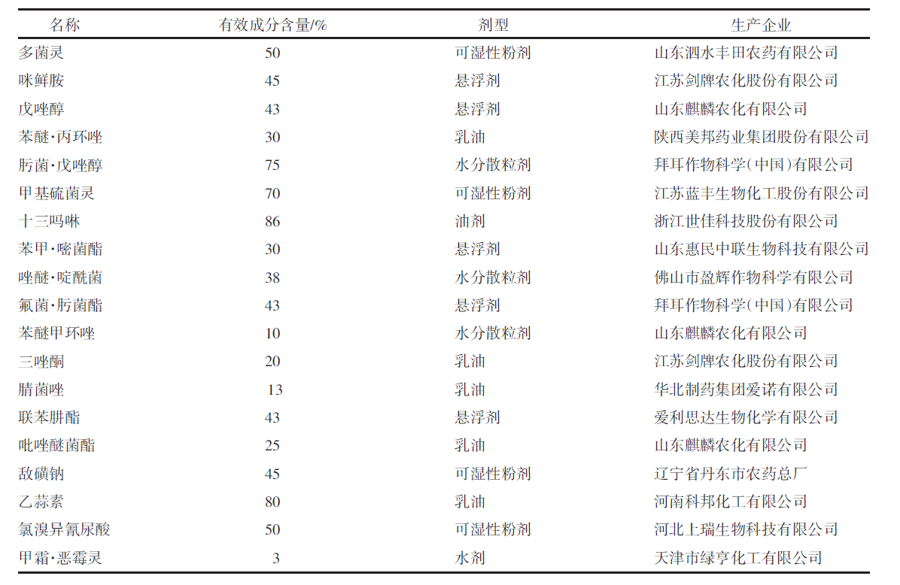| [1] |
孟晨星. 简析无公害胡萝卜栽培技术[J]. 中国农业文摘-农业工程, 2020, 32(3):74-76.
|
| [2] |
韩凤英, 张艳萍, 王勇, 等. 内蒙古地区胡萝卜根腐病综合防控技术[J]. 现代农业, 2020(7):4-5.
|
| [3] |
ABE H, SHINMURA A, AKIMATSU Y. Dry rot of carrot occurred in Hokkaido[J]. Annual Report of The Society of Plant Protection of North Japan, 1997, 48:106-108.
|
| [4] |
桑田博隆, 张焕斌, 柴祖谋. 胡萝卜的新病害——黑色根腐病[J]. 新疆环境保护, 1989(1):56-59.
|
| [5] |
STANKOVIC I, MILOJEVIC K, VUCUROVIC A, et al. First report of Fusarium root rot of stored carrot caused by Fusarium avenaceum in Serbia[J]. Plant Disease, 2015, 99(2):286.
|
| [6] |
张笑宇, 焦建平, 周洪友, 等. 胡萝卜镰刀菌根腐病病原菌的鉴定[J]. 中国蔬菜, 2016(8):64-69.
|
| [7] |
韩凤英, 王勇, 于传宗, 等. 胡萝卜根腐病病原菌的分离鉴定[J]. 北方农业学报, 2020, 48(2):70-75.
doi: 10.12190/j.issn.2096-1197.2020.02.11
|
| [8] |
贺字典, 吴素霞, 宋晓飞, 等. 生防菌与茄病镰刀菌在黄瓜根际动态变化[J]. 中国生物防治学报, 2016, 32(3):357-364.
|
| [9] |
汪静, 梁宗锁, 康冰, 等. 文山三七根腐病病原真菌的鉴定与药剂防治[J]. 西北林学院学报, 2015, 30(1):158-163.
|
| [10] |
申琼, 武峻新. 防治西葫芦根腐病的室内药剂筛选[J]. 山西农业科学, 2017, 45(3):451-452.
|
| [11] |
纵瑞敬. 不同药剂防治胡萝卜腐霉根腐病田间药效比较试验[J]. 安徽农学通报, 2015, 21(23):61.
|
| [12] |
韩凤英, 高婧, 王勇, 等. 胡萝卜茄病镰刀菌生物学特性及药剂敏感性研究[J]. 北方农业学报, 2020, 48(3):117-122.
doi: 10.12190/j.issn.2096-1197.2020.03.18
|
| [13] |
刘欣, 马强, 宿静瑶, 等. 苹果树腐烂病拮抗菌株的分离、筛选和鉴定[J]. 中国果树, 2022(5):50-56.
|
| [14] |
KHAMNA S, YOKOTA A, LUMYONG S. Actinomycetes isolated from medicinal plant rhizosphere soils:diversity and screening of antifungal compounds,indole-3-acetic acid and siderophore production[J]. World Journal of Microbiology and Biotechnology, 2009, 25(4):649-655.
doi: 10.1007/s11274-008-9933-x
|
| [15] |
王文重, 高云飞, 闵凡祥, 等. 马铃薯镰刀菌干腐病研究进展及防控手段[J]. 植物保护, 2020, 46(5):6-12.
|
| [16] |
杨帆, 张飞燕, 孙劲冲, 等. 马铃薯真菌病害拮抗菌株鉴定及初步应用[J]. 中国蔬菜, 2019(11):56-62.
|
| [17] |
DEES M W, WANNER L A. In search of better management of potato common scab[J]. Potato Research, 2012, 55(3/4):249-268.
doi: 10.1007/s11540-012-9206-9
|
| [18] |
张曼, 钱芳, 徐锦华, 等. 葫芦砧木萎蔫病病原镰刀菌鉴定及其防治药剂的筛选[J]. 植物保护, 2019, 45(5):232-236.
|
| [19] |
蒋妮, 宋利沙, 陈乾平, 等. 罗汉果斑枯病菌主要生物学特性及防治药剂筛选[J]. 江苏农业科学, 2019, 47(24):78-81.
|









